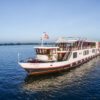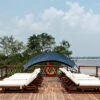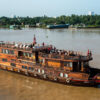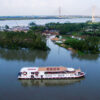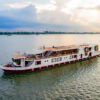The Mekong Delta, often referred to as the “Rice Bowl” of Vietnam, is one of the most captivating regions in Southeast Asia. Known for its intricate network of rivers, canals, and lush landscapes, this fertile region offers a unique waterway adventure like no other. A trip to the Mekong Delta immerses visitors in the daily rhythms of local life, with floating markets, traditional villages, and a rich cultural heritage waiting to be explored. Whether you’re a nature enthusiast, a cultural explorer, or someone seeking an off-the-beaten-path adventure, the Mekong Delta promises an unforgettable experience.
1. The Geography of the Mekong Delta

The Mekong Delta is located in the southernmost part of Vietnam, where the Mekong River, one of the longest rivers in the world, empties into the South China Sea. This region is made up of an intricate network of rivers, canals, and islands, all of which play a crucial role in the livelihoods of the local population. The delta spans over 39,000 square kilometers and is home to more than 17 million people.
The delta is often referred to as a labyrinth of water, with narrow, winding rivers crisscrossing the landscape, flanked by dense mangrove forests, rice paddies, and fruit orchards. The waterways serve as the main transportation routes, making boats the primary mode of travel in this region. As you venture through the delta, you’ll find yourself surrounded by vibrant greenery, serene waters, and the timeless charm of rural Vietnam.
2. The Floating Markets: A Snapshot of Life on the Water
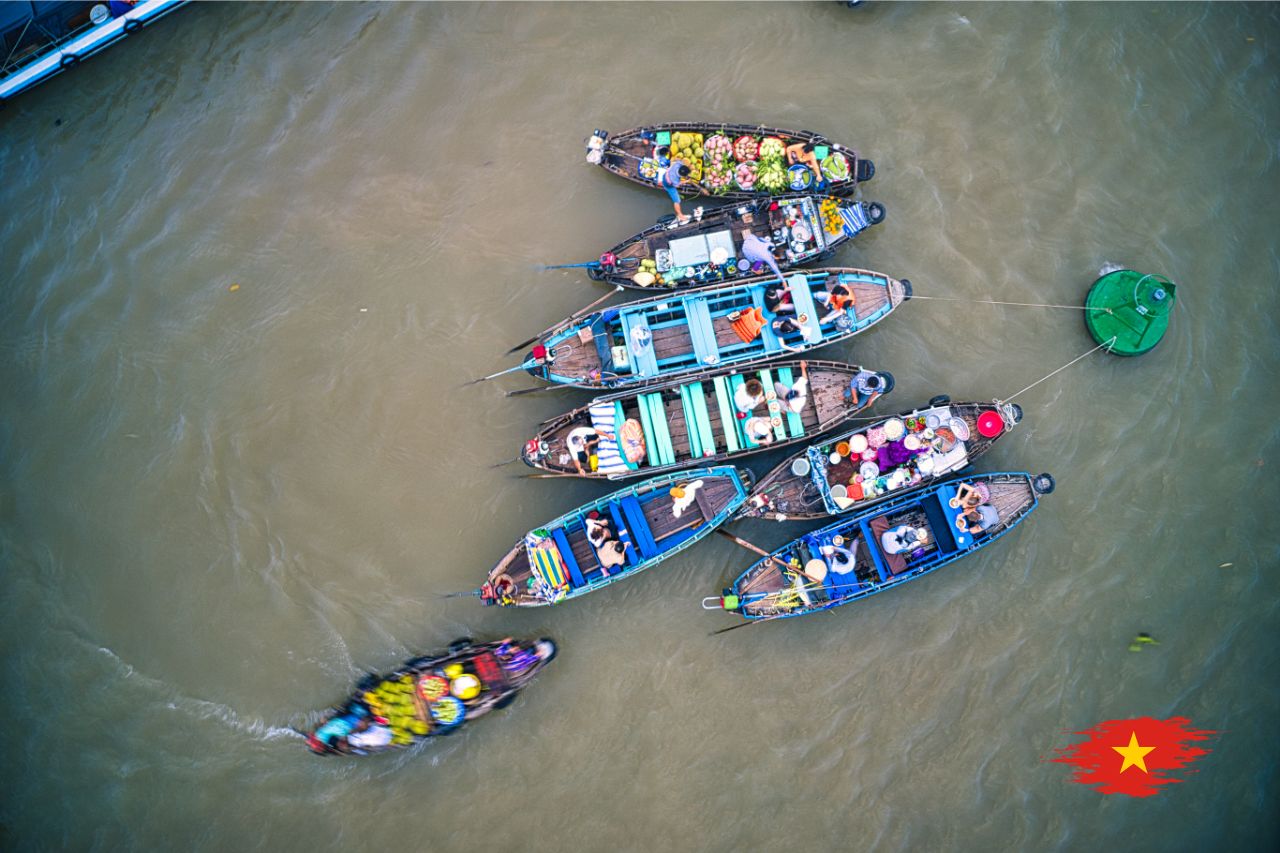
One of the most iconic experiences in the Mekong Delta is visiting its famous floating markets. These bustling markets, where vendors sell everything from fresh produce to handmade crafts, offer a glimpse into the daily lives of the locals. The two most famous floating markets in the delta are Cai Rang and Phong Dien, both located in the Can Tho region.
At these markets, boats filled with fruits, vegetables, and goods line the rivers, creating a colorful spectacle. Early mornings are the best time to visit, as the markets are at their most vibrant. Vendors use large wooden poles to display their goods, and the air is filled with the sounds of haggling and laughter. While the floating markets are a great place to shop for local produce, they also serve as cultural hubs where you can interact with the friendly locals and learn more about the delta’s unique way of life.
Aside from Cai Rang and Phong Dien, there are several other smaller floating markets scattered throughout the delta, each offering its own charm and character. A boat ride through these markets is a must-do experience for anyone visiting the Mekong Delta.
3. Exploring the Waterways: A Boat Ride Through Paradise
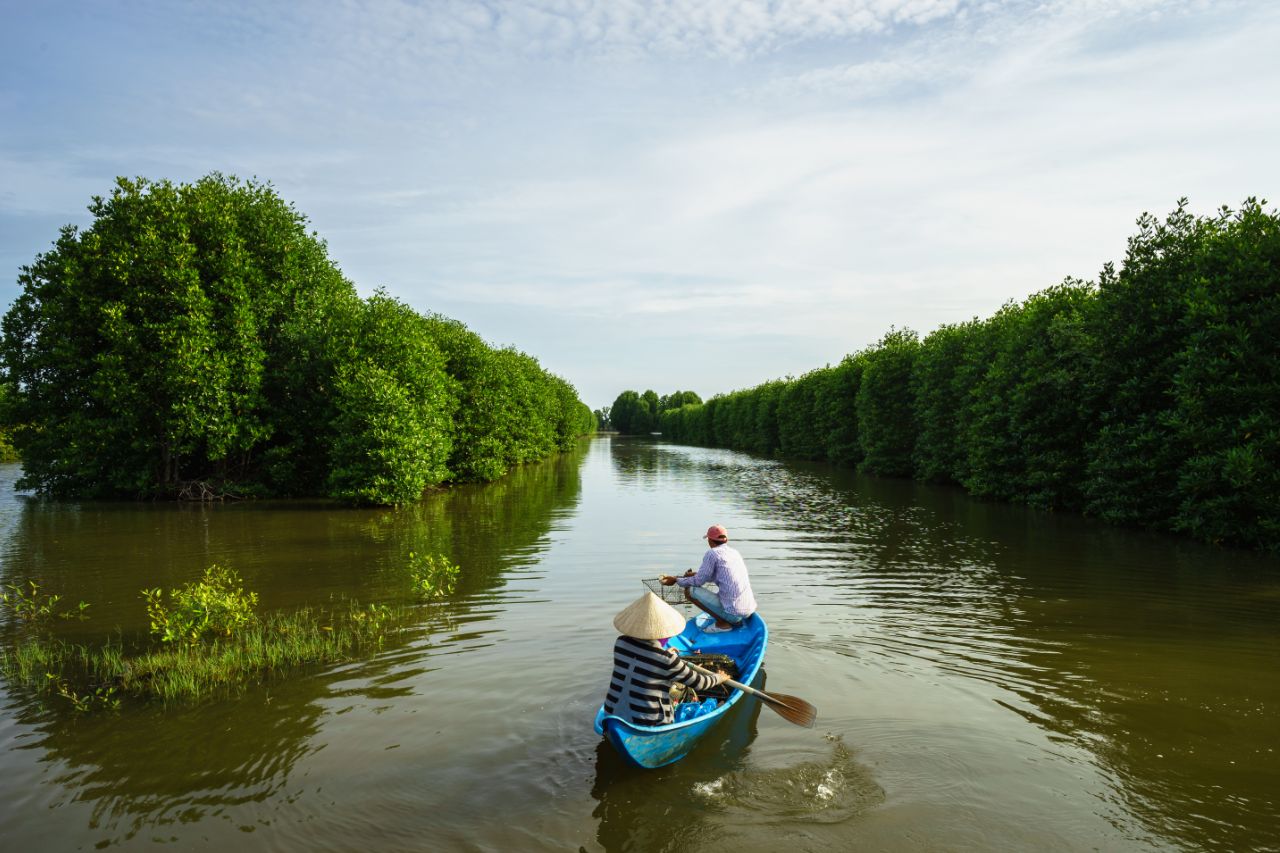
One of the best ways to explore the Mekong Delta is by boat. The labyrinth of canals, rivers, and tributaries offers endless opportunities for exploration. Traditional wooden boats, often paddled by locals, navigate through narrow waterways, passing by lush greenery, wooden stilt houses, and floating villages.
Many tour operators offer boat trips that take you deep into the heart of the delta, allowing you to explore areas that are otherwise inaccessible by land. During these boat rides, you’ll see floating homes, coconut groves, and traditional fishing methods. You may even get the chance to visit local workshops where artisans create intricate handmade goods like traditional baskets or mats.
One of the highlights of a boat ride through the delta is the chance to witness the local fishing techniques. Fishermen in the Mekong Delta use unique methods, including traditional nets and traps, to catch fish and other aquatic life. Watching these time-honored techniques in action is a fascinating experience that provides insight into the region’s deep connection with the water.
4. The Unique Culture of the Mekong Delta
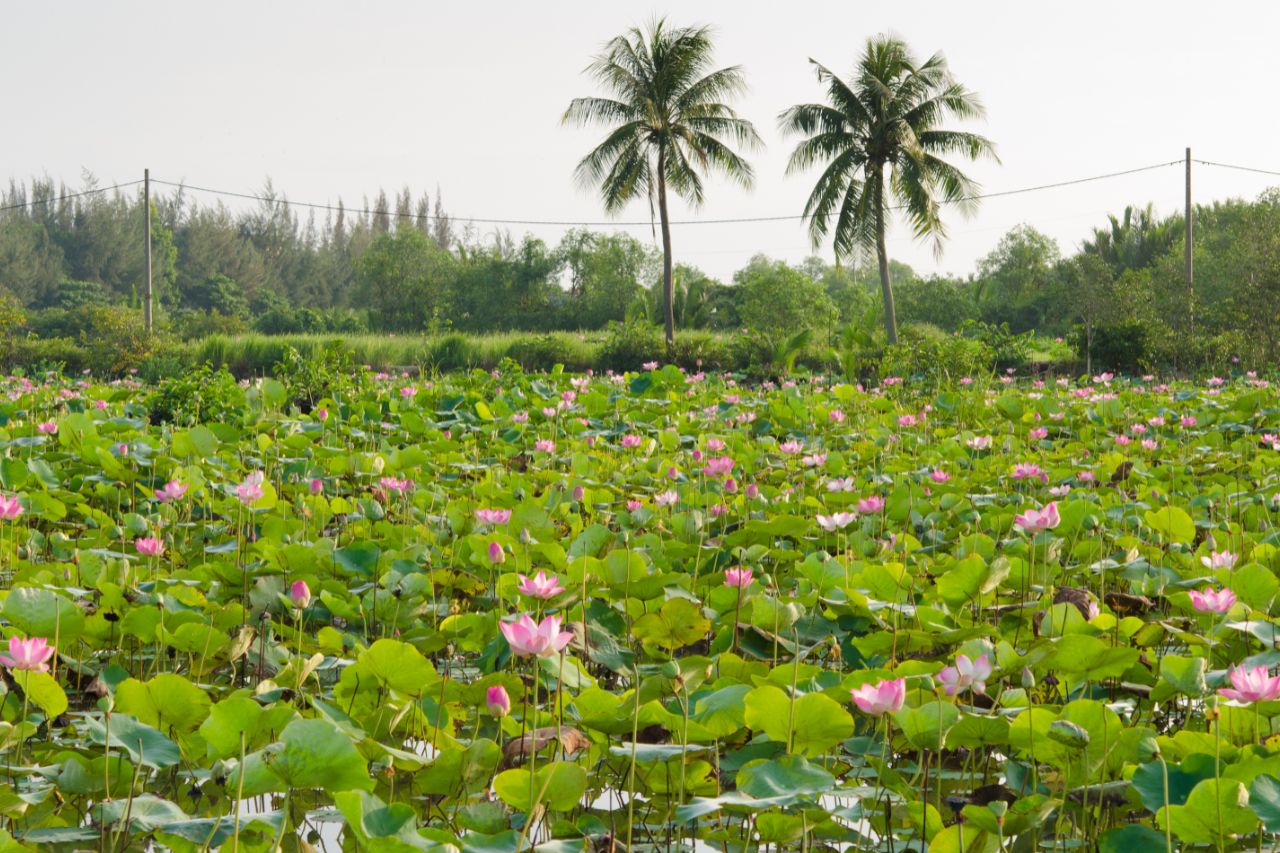
The culture of the Mekong Delta is shaped by its unique geography and the close relationship between the people and the water. The majority of the population in the delta belongs to the Kinh ethnic group, but the region is also home to several other ethnic communities, including the Khmer and the Chinese.
The local culture is heavily influenced by agriculture, fishing, and the waterways. The region’s vibrant markets, festivals, and traditions are a reflection of this. Visitors can explore traditional wooden homes, visit pagodas and temples, and experience the rich folklore and customs that have been passed down through generations.
One of the most fascinating aspects of the Mekong Delta is its unique cuisine. The region is known for its fresh, locally sourced ingredients, particularly fish, shrimp, and tropical fruits. Some of the most popular dishes include “Hu Tieu” (a noodle soup made with pork and shrimp), “Canh Chua” (a sour fish soup), and “Banh Xeo” (Vietnamese pancakes). Many of these dishes are made with ingredients found only in the delta, giving them a distinct flavor that can’t be found anywhere else.
5. Eco-Tourism and Conservation Efforts
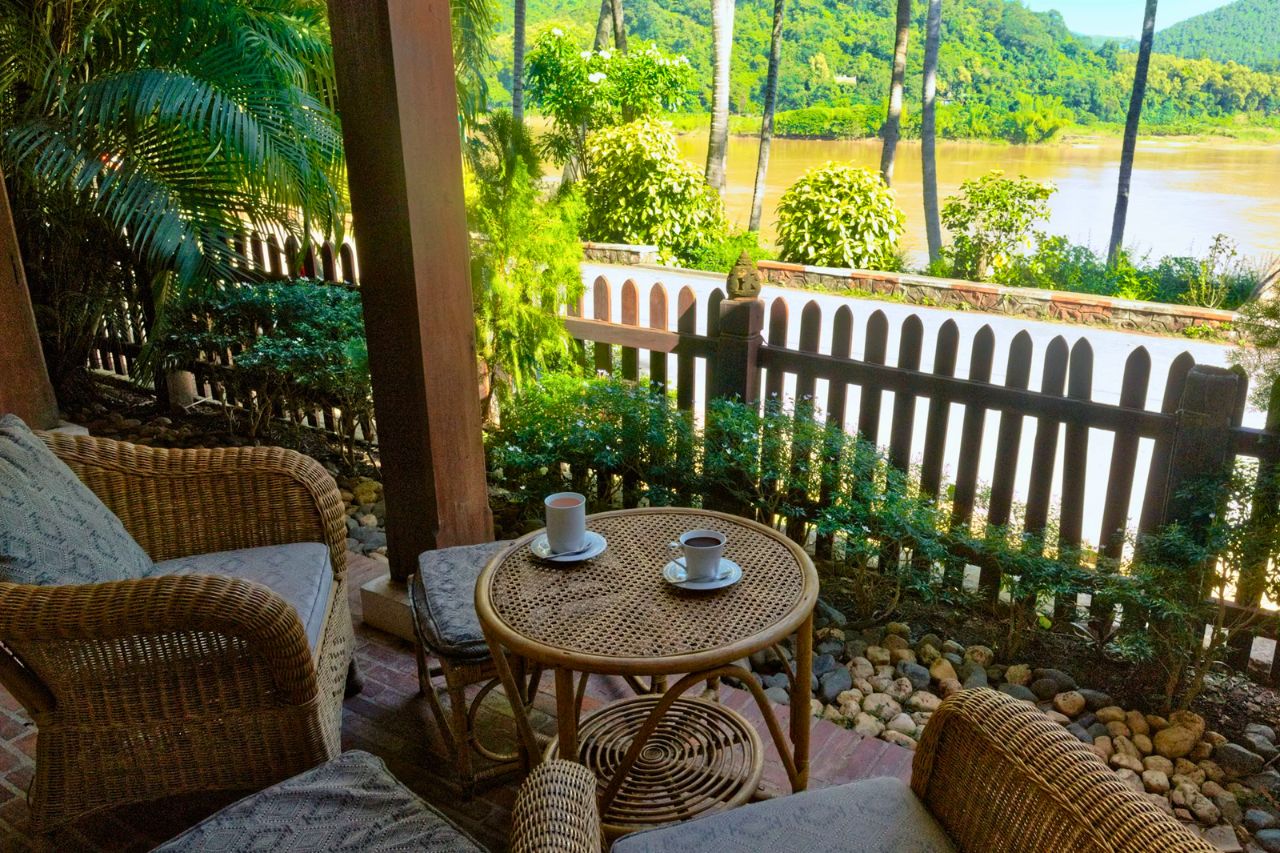
As more tourists flock to the Mekong Delta, the region has become a focal point for eco-tourism and conservation efforts. The delta’s fragile ecosystems, which include wetlands, mangrove forests, and rivers, are under threat from pollution, deforestation, and climate change.
Several local organizations and tour operators are working to promote sustainable tourism practices in the region. Visitors are encouraged to respect local customs, support eco-friendly businesses, and reduce their environmental impact. Some tour operators even offer eco-tours that focus on wildlife conservation and environmental education, giving tourists a deeper understanding of the challenges faced by the delta’s ecosystems.
For those interested in wildlife, the Mekong Delta is home to several protected areas and nature reserves, including the Tram Chim National Park, a haven for birdwatching enthusiasts. The park is home to rare species like the Sarus Crane and other migratory birds. Exploring the natural beauty of the delta while supporting conservation efforts is a rewarding way to experience the region.
6. Best Time to Visit the Mekong Delta
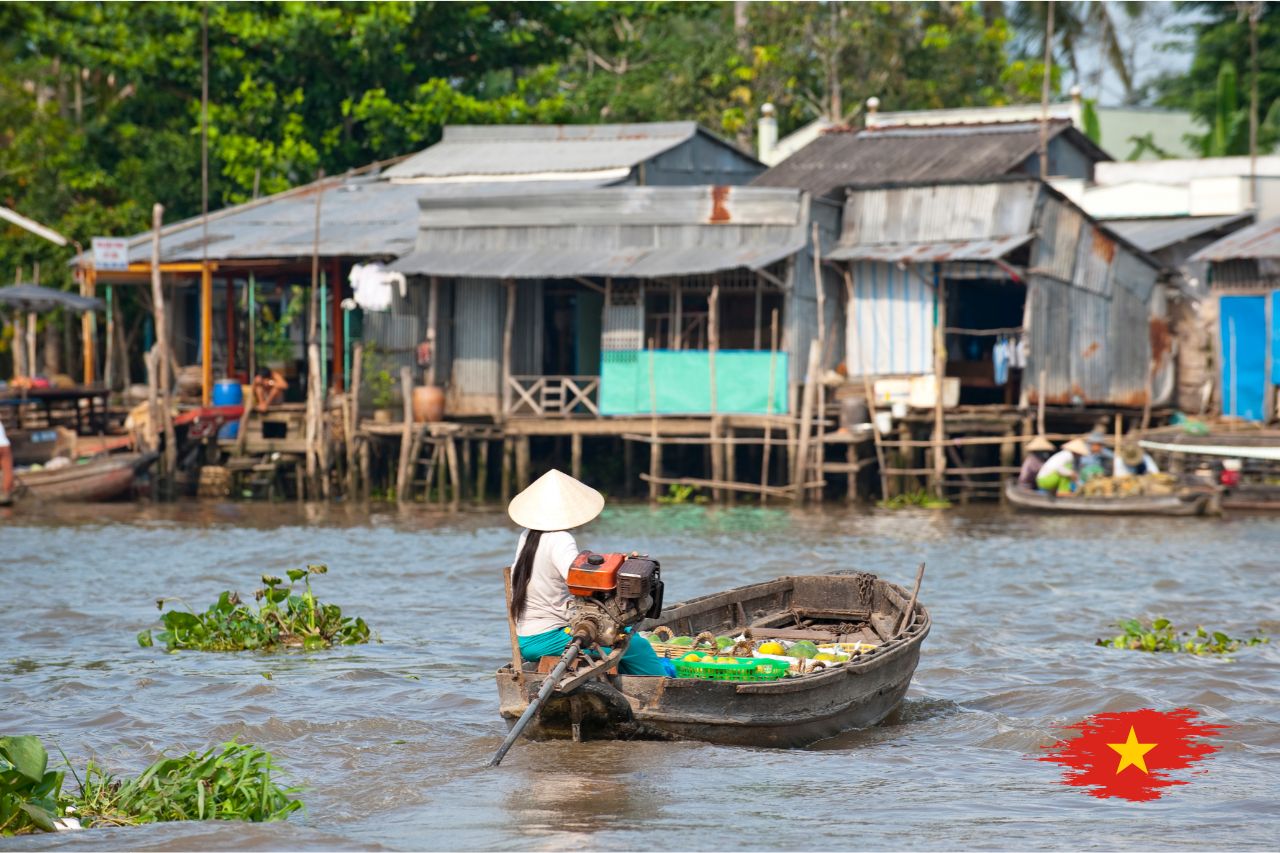
The Mekong Delta has a tropical climate, with two distinct seasons: the wet season (from May to November) and the dry season (from December to April). The dry season is generally considered the best time to visit, as the weather is more comfortable, and the waterways are less prone to flooding. This is also the peak tourist season, so popular spots like the floating markets are more lively.
However, visiting during the wet season can also be a rewarding experience, as the delta becomes even more lush and green, and the rivers swell with fresh water. While some areas may become harder to access due to flooding, this is the time when the region’s agricultural activities are in full swing, providing a unique glimpse into the farming life of the delta.
A visit to the Mekong Delta offers an unparalleled opportunity to immerse yourself in the heart of rural Vietnam. From the bustling floating markets to the serene boat rides through the waterways, the delta is a place where nature, culture, and history come together in perfect harmony. Whether you’re looking for adventure, relaxation, or cultural enrichment, the Mekong Delta provides a unique waterway adventure that will leave you with memories to last a lifetime. So, hop aboard a boat, explore the winding canals, taste the local delicacies, and experience life on the water like never before in this mesmerizing part of Vietnam.

